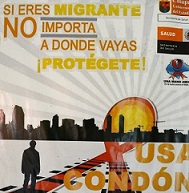Since 2007, HIV and AIDS rates have gone up throughout rural Mexican states, partly as a result of returning migrants who have engaged in high-risk behaviors in the United States and not been able to receive diagnosis or treatment. Medical experts are shifting their attention to the particular dangers faced by Central American migrants—human trafficking, sexual abuse, prostitution, isolation, depression, and drug use—as vectors driving these numbers, especially in the southernmost state of Chiapas, where 40,000 to 60,000 migrants cross through in the hope of finding a better life in Mexico or the United States.
[…]






